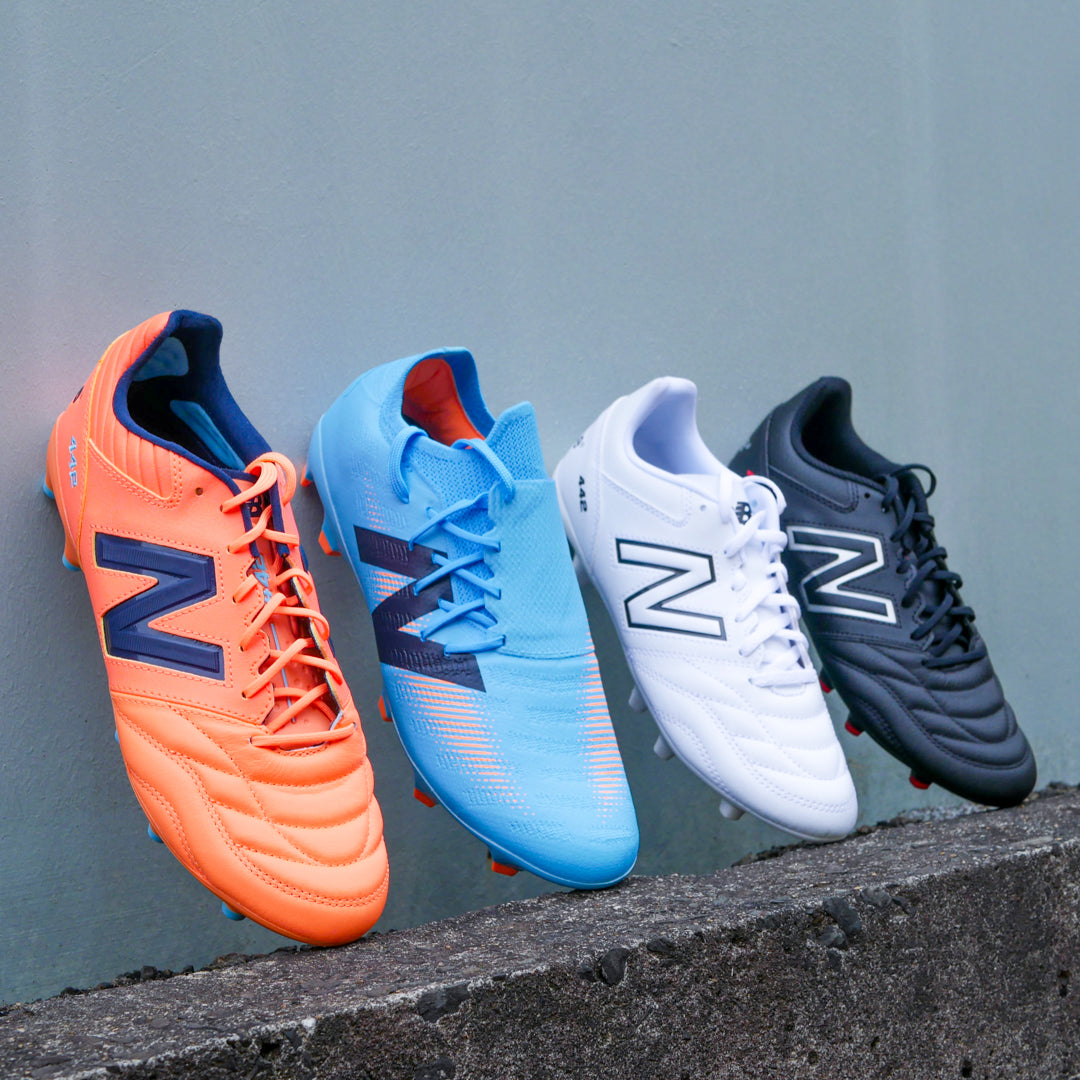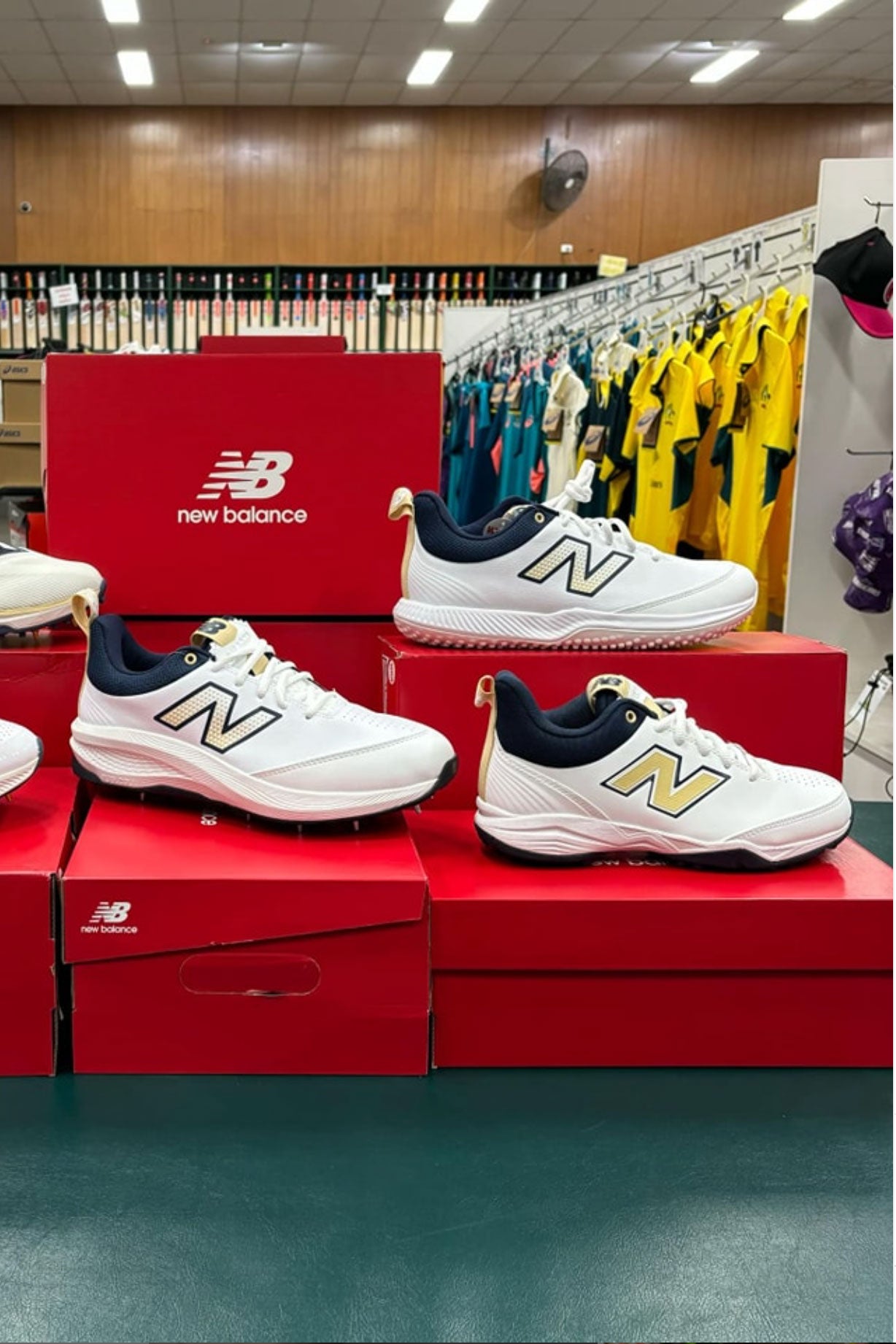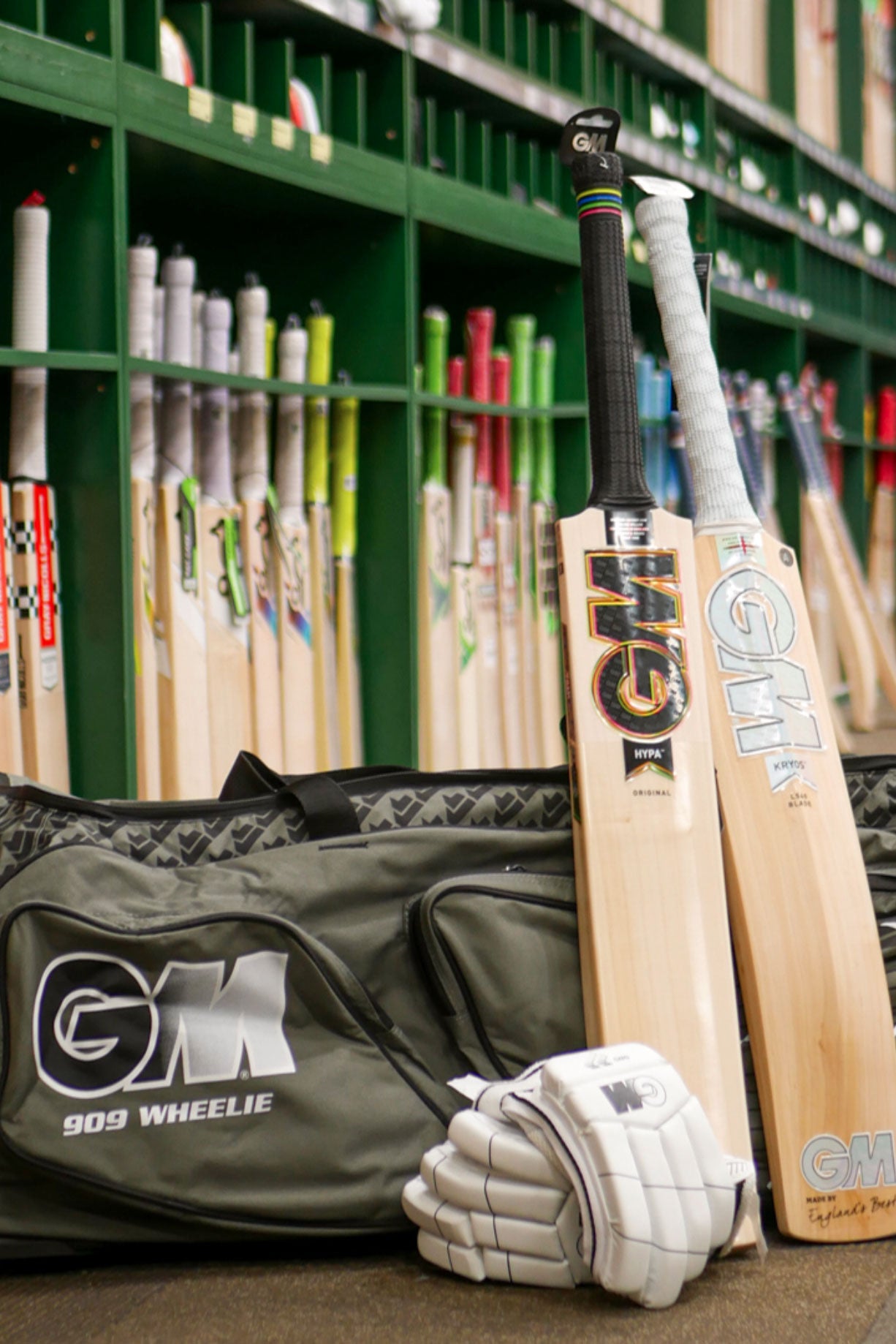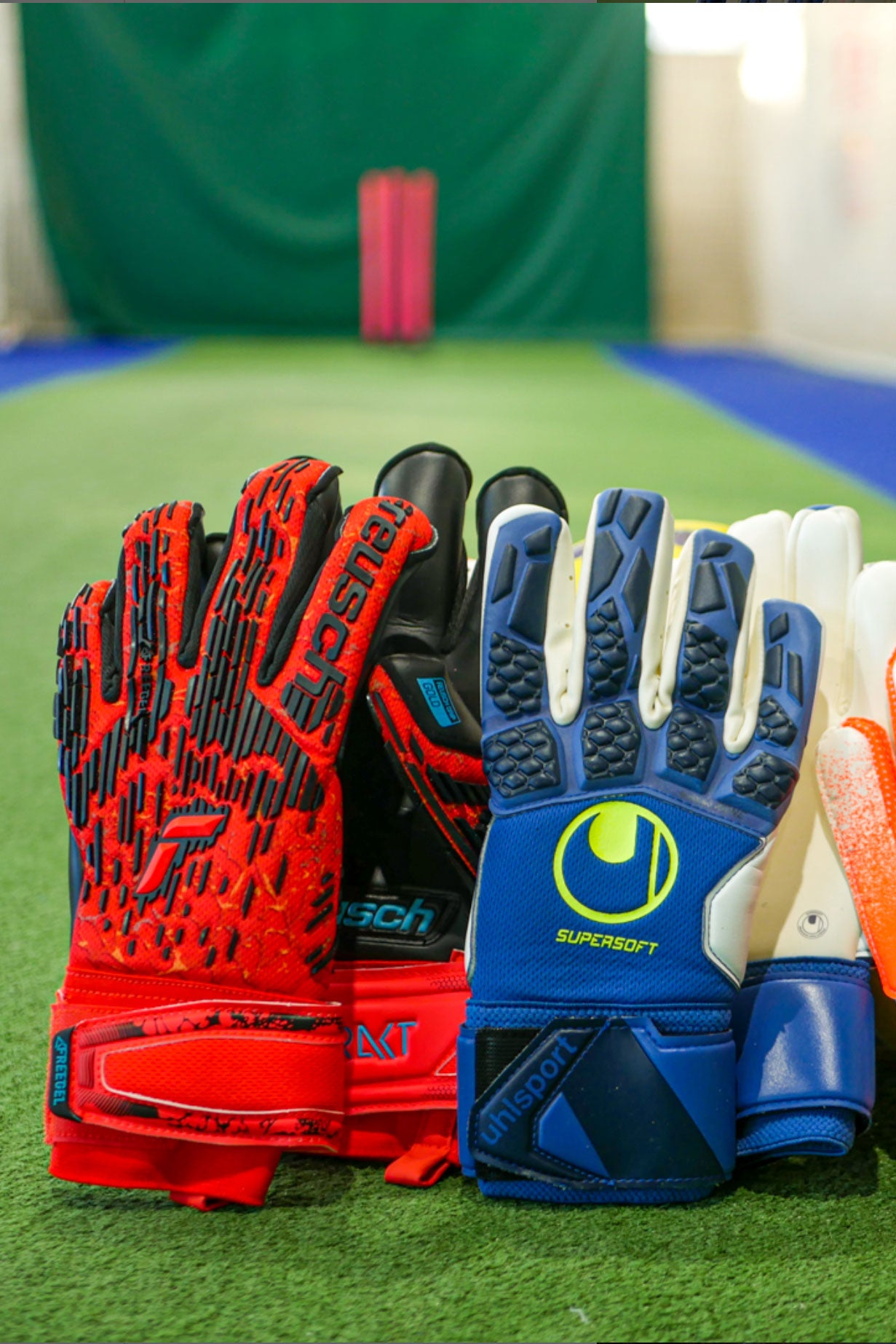Free knocking-in on all cricket bats
BUY NOW, PAY LATER WITH AFTERPAY
Free knocking-in on all cricket bats
BUY NOW, PAY LATER WITH AFTERPAY
Soccer
brands

How to Put Grip on Cricket Bat
October 12, 2025 7 min read
The easiest and most effective way to put a grip on a cricket bat is by using a grip cone. This simple tool makes the process much smoother, as it allows you to slide the grip evenly over the handle without unnecessary struggle or stretching. By using a cone, the grip is guided into place with consistent layering, ensuring there are no overlaps or uneven sections that could affect comfort or control. It also helps achieve a tight, secure fit so that the grip won’t twist or shift during play, which is essential for maintaining proper technique and confidence at the crease. Whether you’re applying a new grip or replacing an old one, a grip cone saves time, reduces frustration, and guarantees a professional finish every time.
Best Way to Put a Grip on Your Cricket Bat
The bat cone is the cleanest, most reliable way to fit a new grip because it stretches the rubber evenly and lets you slide it onto the handle in one controlled motion. Mount the grip on the cone (logo oriented so it finishes at the top of the handle), then roll it off the cone onto the handle with steady pressure—no twisting, no snags. Once it’s on, straighten the pattern, smooth out any bunching, and secure the top with finishing tape. This method is faster, neater, and far less likely to damage the grip than DIY hacks, which is why players, coaches, and pro shops prefer it.
Tools You Can Use to Put On a Cricket Grip (With Pros and Cons)
When it comes to fitting a new grip, there are a few methods players use. Grip cones provide the most control and efficiency, while the plastic bag trick is cheaper but messier. In professional workshops, some technicians even use compressed air for speed. Each method has its advantages and drawbacks, so here’s a breakdown of what works best and why.
Grip Cone – Most Efficient and Reliable
A grip cone is the standard tool used by players, coaches, and cricket stores for replacing grips. The cone stretches the grip evenly, allowing you to slide it smoothly onto the handle without twisting or tearing. Many cones are made of wood or durable plastic, and some models come with a polished finish for easier rolling. Reliable options include Kookaburra, Gray-Nicolls, SS and Kingsport cones, all designed for repeated use. The grip cone’s control and consistency make it the preferred choice for anyone who changes grips regularly.

Plastic Bag Method – Budget DIY Alternative
For a quick, low-cost fix, some players use the plastic bag method. By sliding a thin plastic bag over the handle, then rolling the grip down over it, the reduced friction helps the grip slip into place. Once fitted, the bag is removed. This method works in a pinch but can be messy—grips may twist, bunch up, or tear if not applied carefully. It’s best suited to occasional home use rather than frequent grip changes.
Air Compressor Method – For Equipment Technicians
In professional repair shops or by team equipment staff, the air compressor method is sometimes used. Compressed air is blown into the grip, expanding it just enough to slip quickly onto the handle. This technique is very fast and effective, especially when handling large numbers of bats. However, it requires specialist equipment, practice, and care—too much air pressure can split or overstretch the grip. For that reason, it’s mostly reserved for pro settings rather than casual players.
Step-by-Step Instructions: How to Apply a Cricket Grip Properly
Replacing a grip keeps your bat handle secure, comfortable, and game-ready. Using a grip cone is the most effective method, as it stretches the rubber evenly and lets the grip slide onto the handle without twisting or tearing. Below is a structured walkthrough to help you do it right.
Remove the Old Grip Carefully
Begin by peeling off the finishing or electrical tape at the top of the old grip. Roll or slide the grip upward toward the handle’s top in a steady motion until it comes off. Take care not to pull too hard, as this can damage the rubber binding under the grip or loosen the splice area.
Prepare the Handle for New Grip
Before fitting the new grip, clean off any sticky residue from the old tape. Make sure the rubber binding around the handle is still tight and secure. It’s also a good moment to check the shoulders of the bat for wear, ensuring the new grip will sit smoothly and won’t shift during play.
Roll and Load Grip Onto Cone
Take the new grip and place the end with any design or logo onto the narrow tip of the cone. Roll half of the grip back on itself so it forms a “doughnut,” leaving the other half unrolled. This setup makes it easier to line up the grip correctly and ensures the logo finishes in the right position once applied.

Slide Grip onto Handle Smoothly
With the grip prepared, place the cone firmly on top of the bat handle. Roll or slide the grip off the cone and down onto the handle in a slow, even motion. Keep the bat steady and apply consistent pressure to prevent the grip from snapping back or overstretching.

Adjust and Secure the Grip
Once the grip is fully rolled down, check that the top and bottom edges are even. Straighten any logos or patterns so they sit correctly, and smooth out air bubbles or twists. Finish by wrapping bat tape or grip tape around the top of the grip, just under the splice, to keep it secure during play.

When to Change Your Cricket Bat Grip
A good grip is essential for control, comfort, and shock absorption — but grips don’t last forever. Over time, they wear down and stop performing as they should. Common signs it’s time to replace your grip include noticeable slippage in your hands, loss of tackiness, hardened or shiny patches from sweat and friction, or visible wear such as splits and thinning sections. If the grip starts to twist or slide during play, it should be replaced immediately to avoid losing control of the bat.
How often you’ll need to change your grip depends on how much you play:
-
Frequent players (several times a week): every 1–2 months.
-
Club/recreational players (once a week): 2–3 times a season.
-
Occasional/social players: once or twice a year, or whenever signs of wear appear.
Replacing grips regularly not only keeps the bat comfortable but also protects your hands and helps maintain consistent performance at the crease.
Choosing the Right Cricket Grip for Comfort and Performance
The right grip makes a big difference to how a bat feels in your hands. Factors such as thickness, texture, and shock absorption all affect comfort and control at the crease. Players also tend to have brand preferences — popular options include GM Octopus, Kookaburra Chevron, and SS Matrix, each designed with unique patterns for performance and feel. Choosing the right grip comes down to balancing cushioning, feedback, and durability to suit your playing style.
Thick vs Thin Grips
Thicker grips provide extra padding and are ideal for players who face fast bowlers or want to reduce vibrations. They are slightly heavier and can make the handle feel bulkier, but they excel at shock absorption and comfort during long innings. Thinner grips, on the other hand, give a closer connection to the handle, offering more precision and control. They are lighter, provide better “feel” of the bat, but can transmit more shock to the hands and may wear out faster
Texture and Pattern Types
Grip patterns affect both traction and comfort. Chevron grips (like the Kingsport Chevron) are classic, offering firm, directional ridges that suit players who want a secure hold with minimal bulk. Ripple grips provide layered cushioning and are good for shock absorption, making them popular with middle-order players who value comfort. Octopus grips (like Kookaburra Octopus) feature small suction-like dimples that maximise surface area and tackiness, ensuring the bat doesn’t slip even in sweaty conditions. Premium options like the SS Matrix combine patterns for balance, giving reliable grip, cushioning, and control. Choosing the right texture depends on whether you prioritise stability, cushioning, or feel in your batting style.
Final Tips for a Professional-Level Bat Grip Application
To finish your grip replacement like a pro, stick to a few best practices. Always start with a clean handle so the grip sits evenly and won’t slip during play. Take time to choose the right grip thickness and texture to match your comfort and batting style. For the most reliable results, use a grip cone—it ensures smooth application without overstretching or tearing. Once fitted, carefully check the grip for twists, bubbles, or misalignment, and secure the top with finishing tape. Taking these extra steps not only gives your bat a professional finish but also maximises comfort, control, and durability at the crease.
FAQs About Putting a Grip on a Cricket Bat
Do I need to use a cone to put on a grip?
A grip cone is strongly recommended because it makes the process faster, cleaner, and safer. It stretches the grip evenly, prevents twisting or tearing, and gives the most professional finish. While you can use alternatives like a plastic bag, these are trickier and less reliable.
Can I use more than one grip on my bat?
Yes. Some players layer two or even three grips to make the handle thicker and absorb more shock. This can improve comfort, especially against fast bowling. The trade-off is added weight in the handle, which can change the bat’s balance, so it comes down to personal preference.
What should I do if the grip is too loose or tight?
-
If the grip feels too loose, add a layer of thin bat tape under the grip to build up the handle.
-
If it feels too tight, warm the grip slightly in your hands to make it more pliable, then re-apply using a cone. If it still resists, the grip may be undersized for your handle, and a different model will fit better.
Subscribe
Sign up to get the latest on sales, new releases and more …





